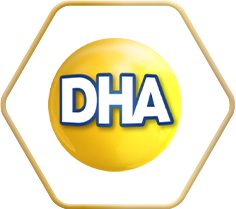Where can I get DHA?
By Reed Mangels, PhD, RD
DHA is an omega-3 fatty acid that has been the subject of intense study in recent years. It may play a role in reducing the risk of dying from heart disease, of developing dementia, and of having a premature infant. There is no RDA for DHA. The World Health Organization recommends that healthy adults get 250 milligrams per day of a combination of EPA and DHA (1). EPA is another omega-3 fatty acid. DHA is found in fatty fish and, to a lesser extent, in eggs. Vegans and others who do not eat fish can get DHA from microalgae which naturally contain DHA. Microalgae is where fish get their DHA!
There are vegan supplements which supply DHA from microalgae and these have been shown to be well-absorbed (2). Vegan DHA supplements typically contain between 120 and 400 milligrams of DHA per capsule/soft gel/dropper (3). Some vegan foods have been fortified with DHA. If you are looking for a vegan source of DHA, consider using a supplement containing DHA derived from microalgae or a food fortified with microalgal DHA.
Here are some examples of fortified foods:
Oatly Full Fat Oatmilk Chilled 35 milligrams of DHA in 8 ounces
Ripple Kids Plant-based Milk 50 milligrams of DHA in 8 ounces
Ripple Unsweetened Original Plant-based Milk 32 milligrams of DHA in 8 ounces
House Foods Omega-3 Tofu 32 milligrams of DHA in a 3 ounce serving
Good Catch Plant-based Tuna 230 milligrams of DHA in a 3 ounce serving
References
- FAO/WHO Expert Consultation on Fats and Fatty Acids in Human Nutrition. Fats and Fatty Acids in Human Nutrition. Geneva, Switzerland: FAO; 2010.
- Arterburn LM, Oken HA, Hoffman JP, et al. Bioequivalence of docosahexaenoic acid from different algal oils in capsules and in a DHA-fortified food. Lipids. 2007;42:1011–1024.
- Mangels, R.; Messina, V.; Messina, M. The Dietitian’s Guide to Vegetarian Diets, 4th ed. Jones and Bartlett: Sudbury, MA, USA, 2022.

